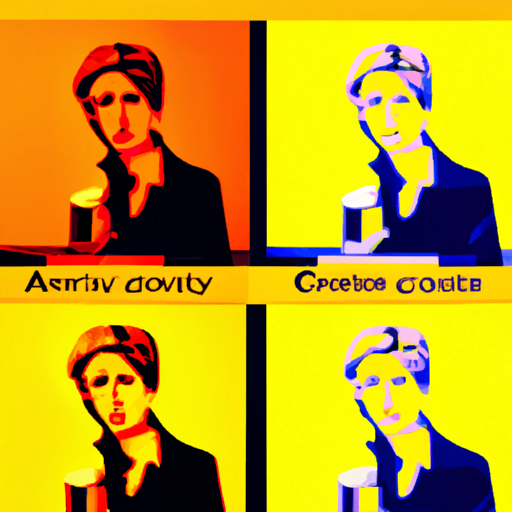
-
Table of Contents
Jacqueline Casey: The Iconic Graphic Designer Who Transformed MIT’s Visual Identity

Graphic design is a powerful tool that can shape the way we perceive and interact with the world around us. One designer who understood this concept and made a significant impact in the field is Jacqueline Casey. Her innovative approach to graphic design, particularly during her tenure at the Massachusetts Institute of Technology (MIT), revolutionized the way educational institutions communicate visually. In this article, we will explore the life and work of Jacqueline Casey, her contributions to graphic design, and the lasting legacy she left behind.
Early Life and Education
Jacqueline Casey was born on April 1, 1927, in Quincy, Massachusetts. She grew up in a creative household, with her father being a commercial artist. This early exposure to art and design sparked her interest in the field and set the foundation for her future career.
Casey attended the Massachusetts College of Art and Design, where she studied graphic design. Her education provided her with a strong understanding of design principles and techniques, which she would later apply in her professional work.
Joining MIT and Transforming its Visual Identity
In 1955, Jacqueline Casey joined the Office of Publications at MIT as a junior designer. Little did she know that this would be the beginning of a transformative journey that would shape her career and the visual identity of MIT itself.
At the time of Casey’s arrival, MIT’s visual identity was outdated and lacked a cohesive design system. Recognizing the need for change, Casey set out to modernize the institution’s visual communication. She embraced the principles of Swiss graphic design, which emphasized simplicity, clarity, and functionality.
Casey’s approach to design was revolutionary for its time. She combined bold typography, vibrant colors, and dynamic compositions to create visually striking posters, brochures, and other promotional materials. Her designs effectively communicated complex information in a visually appealing and accessible manner.
The Impact of Casey’s Work
Casey’s work at MIT had a profound impact on the institution and the field of graphic design as a whole. Her designs not only transformed MIT’s visual identity but also influenced the way other educational institutions approached graphic design.
One of Casey’s most notable contributions was her ability to bridge the gap between art and science. She understood the importance of visual communication in scientific research and education, and her designs effectively conveyed complex scientific concepts to a broader audience.
Casey’s work also played a crucial role in shaping the perception of MIT as a cutting-edge institution. Her designs captured the spirit of innovation and intellectual curiosity that defined MIT, helping to establish its reputation as a world-class educational institution.
Casey’s Design Philosophy
Throughout her career, Jacqueline Casey developed a unique design philosophy that guided her work. She believed that design should be functional, accessible, and visually engaging. Her designs were not merely decorative but served a purpose in conveying information effectively.
Casey also emphasized the importance of collaboration in the design process. She worked closely with faculty, researchers, and other stakeholders to understand their needs and goals. This collaborative approach allowed her to create designs that met the specific requirements of each project while maintaining a cohesive visual identity for MIT.
Legacy and Recognition
Jacqueline Casey’s contributions to graphic design have been widely recognized and celebrated. Her work has been exhibited in prestigious galleries and museums, including the Museum of Modern Art (MoMA) in New York City.
In 1992, Casey received the AIGA Medal, the highest honor in the field of graphic design. This recognition highlighted her significant contributions to the profession and her lasting impact on the visual identity of educational institutions.
Conclusion
Jacqueline Casey’s innovative approach to graphic design and her transformative work at MIT have left an indelible mark on the field. Her ability to combine art and science, her emphasis on functionality and accessibility, and her collaborative approach to design continue to inspire designers today.
Casey’s legacy serves as a reminder of the power of graphic design to shape perceptions, communicate complex ideas, and create a lasting visual identity. Her work at MIT not only transformed the institution’s visual communication but also influenced the way educational institutions approach graphic design. Jacqueline Casey will forever be remembered as a pioneer in the field of graphic design and a visionary who revolutionized the way we perceive and interact with visual information.
